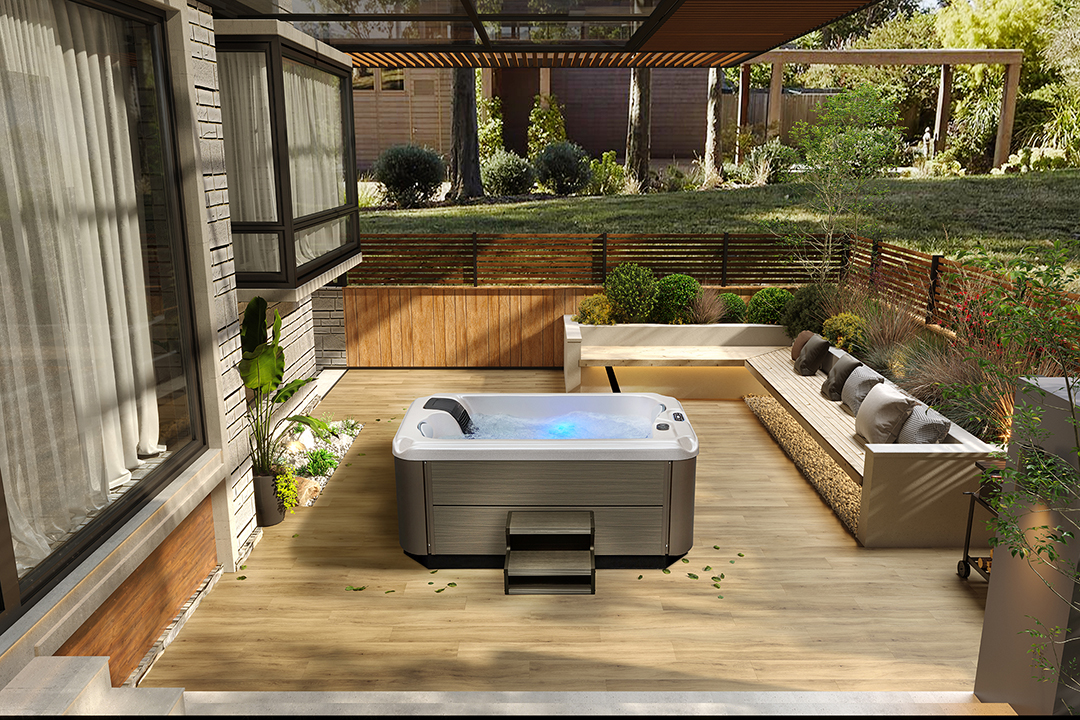Hydrotherapy in Indoor Hot Tubs: A Growing Trend
In recent years, the allure of hydrotherapy in indoor hot tubs has been steadily on the rise, and it’s easy to understand why. As more and more people seek relaxation, relief, and rejuvenation, hydrotherapy in the comfort of indoor hot tubs has become an increasingly popular choice.
Stress is a ubiquitous presence in our fast-paced world, and one of the key reasons behind the growing popularity of hydrotherapy in hot tubs is its unparalleled ability to provide stress relief. The warm water, massaging jets, and soothing ambiance create a tranquil escape from the chaos of daily life. Whether it’s the end of a long workday or the desire to unwind over the weekend, hot tub hydrotherapy helps melt away stress, leaving you refreshed and rejuvenated.
Beyond stress relief, hydrotherapy has garnered recognition for its effectiveness in pain management. The combination of buoyancy, heat, and targeted jet massage offers relief from a range of conditions, including sore muscles, arthritis, and chronic pain. Many individuals have turned to hot tubs to complement their pain management routines, often finding significant improvements in their comfort levels.
Hydrotherapy also has a direct impact on sleep quality. A good night’s sleep is essential for overall well-being, and hot tub hydrotherapy can aid in achieving restful sleep. By promoting relaxation and reducing muscle tension, soaking in a hot tub before bedtime can help you fall asleep faster and enjoy a deeper, more rejuvenating slumber.
Improved circulation is another notable benefit of hydrotherapy. Hot water immersion stimulates circulation, which is advantageous in reducing inflammation, aiding in muscle recovery, and supporting cardiovascular health. Better circulation ensures that oxygen and nutrients are efficiently delivered to body tissues, contributing to overall vitality.
For athletes and fitness enthusiasts, hot tub hydrotherapy is a favored method for muscle recovery. The combination of warmth and massage helps reduce muscle soreness, improve flexibility, and speed up the healing process after strenuous workouts or physical activities.
Hydrotherapy doesn’t only benefit the body; it also nurtures emotional well-being. Soaking in a hot tub provides a serene space for reflection and mindfulness. It’s a place to escape the digital world, disconnect from stressors, and reconnect with oneself.
Hot tubs offer a unique space for family and social bonding. Sharing the experience of hydrotherapy with loved ones encourages quality time and meaningful conversations. It’s a way to strengthen relationships and create lasting memories.
Modern hot tubs come with customizable features, such as various jet types, seating arrangements, and water temperatures. This allows individuals to tailor their hydrotherapy experience to their specific needs and preferences. Indoor hot tubs provide the convenience of year-round access, ensuring that the benefits of hydrotherapy are readily available.
In conclusion, the rising popularity of hydrotherapy in indoor hot tubs can be attributed to its wide-ranging benefits for physical and mental well-being. As more people seek relaxation, relief, and a sanctuary from the stresses of daily life, indoor hot tubs have become a trusted retreat. The combination of warmth, massage, and the calming atmosphere of hydrotherapy offers an effective and enjoyable way to unwind, rejuvenate, and improve one’s overall quality of life.

